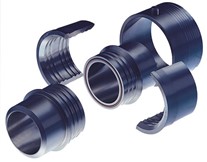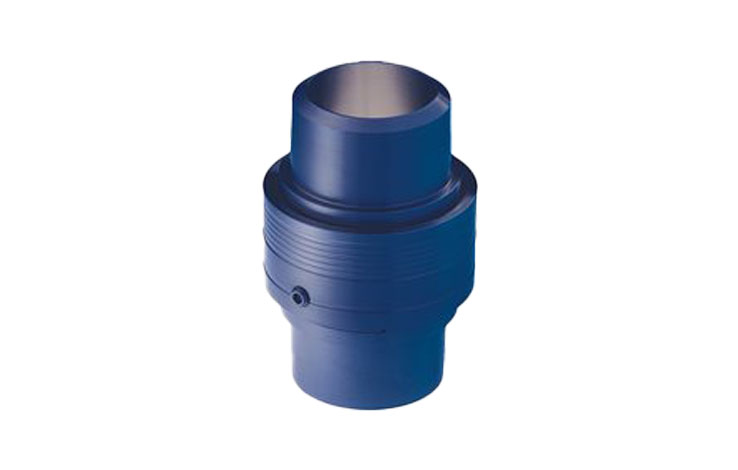Lightweight, Threadless, Boltless Coupling Alternative to Flanges
DUR O LOK couplings are all-purpose, lightweight connectors that replace standard ANSI flanges. The design of DUR O LOK couplings ensures reliable operation over a wide range of temperatures.
The performance superiority, space, and weight provided by DUR O LOK couplings make them the preferred choice in many pipe connecting applications.
How It Works
The heart of the DUR O LOK design is the system of wedge-shaped, circumferential teeth located on the outside diameter of the hubs and the inside diameter of the mating split coupler. The wedging action of the teeth compresses the gasket and brings the hub ends into contact with each other. The outside diameter of the split coupler is tapered. A ring with a tapered inside diameter slides over the split coupler ring segments, forcing them together and holding them firmly in place. The tapered retaining ring is secured with a set screw. Without wrenches, the entire connection process can be accomplished in less than a minute.

Benefits
- Reduce maintenance
- Reduce materials cost
- Reduce space requirements for pipe racks
Features
- The DUR O LOK coupling meets the requirements of the following codes:
• ASME Boiler and Pressure Vessel Code, Section VIII
• ASME B31.1, Code for Pressure Piping
• ASME B31.3, Code for Process Piping - Compact – length and outside diameter reduced by 30% – 50%, compared to flanges. Allows double the number of pipes per rack and improves external flow distribution for immersed couplings. It will reduce shadowing for couplings used in process vessels.
- Lightweight – weight reduced by 60% – 90%, compared to flanges.
- Simple – Number of parts reduced by 55% – 75% per connection, compared to flanges.
- Fast – Save up to 10-15 minutes to make or break each connection.
- Non-restrictive – Full port inside diameter eliminates pressure drop and allows “pigging”.
- Smooth interior bore – Minimizes flow disturbances. It eliminates attrition in catalyst and other solids conveying applications.
- Boltless and threadless – Only safety set screws required. No torque measurements are required. No bolt holes to align. No need to tighten connections after thermal cycling. Simplifies painting and insulating.
- Thermally stable – Design minimizes thermal expansion effects on sealing. It will tolerate very rapid changes in external or internal temperatures.
- No interference fits or metal-to-metal sealing – Higher reliability. Less susceptible to damage.

